-
 bitcoin
bitcoin $102877.190955 USD
1.88% -
 ethereum
ethereum $3430.435064 USD
4.52% -
 tether
tether $0.999264 USD
-0.05% -
 xrp
xrp $2.307310 USD
4.49% -
 bnb
bnb $987.740692 USD
3.82% -
 solana
solana $161.947760 USD
3.97% -
 usd-coin
usd-coin $0.999712 USD
-0.05% -
 tron
tron $0.292810 USD
2.93% -
 dogecoin
dogecoin $0.179738 USD
10.70% -
 cardano
cardano $0.580716 USD
8.75% -
 hyperliquid
hyperliquid $42.463448 USD
8.40% -
 chainlink
chainlink $15.763437 USD
7.05% -
 zcash
zcash $649.595636 USD
17.21% -
 bitcoin-cash
bitcoin-cash $511.610261 USD
7.19% -
 stellar
stellar $0.292537 USD
7.91%
Is it safe to sign a transaction with a new smart contract?
Always verify smart contract audits, ownership, and code before signing—unlimited approvals or unverified contracts can lead to irreversible fund loss.
Nov 06, 2025 at 09:39 am
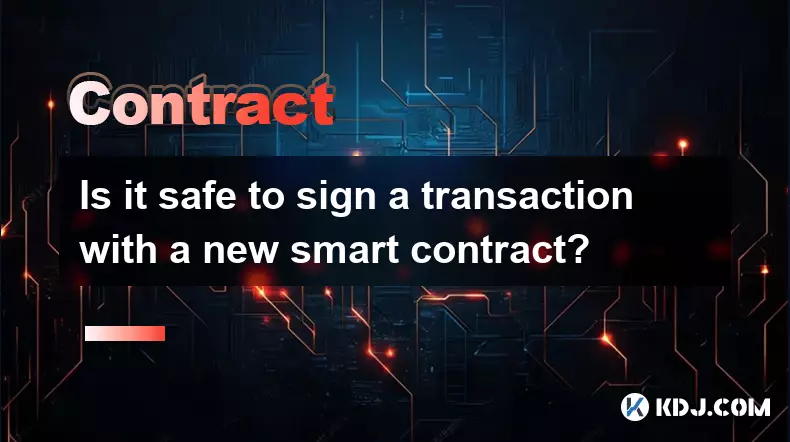
Understanding the Risks of Signing Transactions with New Smart Contracts
1. Every time a user signs a transaction involving a new smart contract, they expose themselves to potential risks that may not be immediately visible. These contracts are immutable once deployed, meaning any flaws or malicious functions cannot be altered after the fact.
2. Unknown code behavior is one of the most significant concerns. Without a comprehensive audit or public verification, the contract could include functions designed to drain wallet balances, lock funds indefinitely, or redirect assets to unauthorized addresses.
3. Phishing attacks often disguise malicious contracts as legitimate ones. A fake decentralized exchange or NFT marketplace might prompt users to sign what appears to be a routine approval, only to grant full access to their holdings.
4. Even if the contract’s source code is available, most users lack the technical expertise to analyze Solidity or Rust logic thoroughly. Relying solely on interface claims without verifying backend functionality increases vulnerability.
5. Front-running and sandwich attacks can also be embedded in contract logic, especially within decentralized finance (DeFi) platforms. Users might unknowingly authorize transactions that manipulate token prices to the benefit of attackers.
Always Verify Contract Ownership and Audit Status Before Interacting
1. Reputable projects typically publish third-party audit reports from firms like CertiK, PeckShield, or OpenZeppelin. The absence of such documentation should raise immediate suspicion.
2. Check if the contract has been verified on block explorers like Etherscan or BscScan. Verified contracts allow users to review the actual code, compare it with GitHub repositories, and confirm there are no hidden functions.
3. Look for community trust indicators such as long-standing deployment history, consistent interaction volume, and recognition by established platforms like Uniswap or Aave.
4. Use tools like Tenderly or Forta to simulate transactions before signing. These services can detect unusual behaviors, such as unexpected token approvals or excessive gas consumption.
5. Confirm whether the contract owner has renounced control. Contracts where ownership remains active could be updated or exploited by the developer at any time, even if currently safe.
Best Practices for Secure Wallet Interaction
1. Limit permissions using wallet features like “Revoke Approval” tools. Instead of granting infinite token allowances, specify exact amounts needed for each transaction.
2. Utilize dedicated wallets for interacting with untrusted contracts. Keeping primary funds in a separate, secure wallet minimizes exposure if an interaction turns out to be malicious.
3. Enable transaction decoding in wallets like MetaMask or Rabby. This feature translates raw data into human-readable actions, revealing exactly what permissions are being granted.
4. Monitor real-time alerts through blockchain monitoring dashboards. Services like De.Fi Shield or BlockSec provide instant notifications when suspicious contract patterns are detected.
5. Avoid rushing into early-stage project interactions based on social media hype. Newly launched contracts with minimal scrutiny are prime targets for exploitation.
Frequently Asked Questions
What does it mean when a smart contract requests unlimited token approval?Unlimited token approval allows the contract to spend all of your tokens of that type without further consent. This poses a high risk if the contract is compromised or malicious.
Can a signed transaction be reversed if it interacts with a harmful contract?No. Blockchain transactions are irreversible once confirmed. If a signed transaction grants access to funds, those assets may be lost permanently unless recovered through external intervention.
How can I check if a smart contract has been audited?Visit the project’s official website and look for audit reports from known security firms. Cross-reference these findings on the contract’s page on Etherscan or similar explorers.
Is open-source code enough to guarantee a smart contract is safe?Not necessarily. While open-source code allows transparency, it must also be independently audited and widely reviewed. Malicious logic can be hidden within complex or obfuscated code structures.
Disclaimer:info@kdj.com
The information provided is not trading advice. kdj.com does not assume any responsibility for any investments made based on the information provided in this article. Cryptocurrencies are highly volatile and it is highly recommended that you invest with caution after thorough research!
If you believe that the content used on this website infringes your copyright, please contact us immediately (info@kdj.com) and we will delete it promptly.
- Ripple (XRP) in 2026: Hold or Fold? A Look at XRP's Future and Emerging DeFi Alternatives
- 2025-11-08 18:35:01
- Zcash ZEC Coin Price Explosion: From Privacy Niche to Center Stage
- 2025-11-08 18:55:01
- Berachain Price Prediction: Navigating the Honeycomb Hype in Crypto
- 2025-11-08 18:55:01
- Arthur Hayes, Gold, and Bitcoin: A Modern Monetary Trinity?
- 2025-11-08 19:15:01
- Shiba Inu's Next Move: Navigating a Shifting Market
- 2025-11-08 19:20:01
- Pakistan's Crypto Crossroads: Balancing Opportunity with Asset-Backed Realities
- 2025-11-08 19:20:01
Related knowledge

What is a state machine and how can a contract be designed as one?
Nov 08,2025 at 02:19pm
Understanding State Machines in Blockchain Context1. A state machine is a computational model used to design systems that transition between defined s...

How do you upgrade a smart contract using the UUPS proxy pattern?
Nov 09,2025 at 01:19am
Understanding the UUPS Proxy Pattern in Smart Contract DevelopmentThe UUPS (Universal Upgradeable Proxy Standard) pattern has become a cornerstone in ...
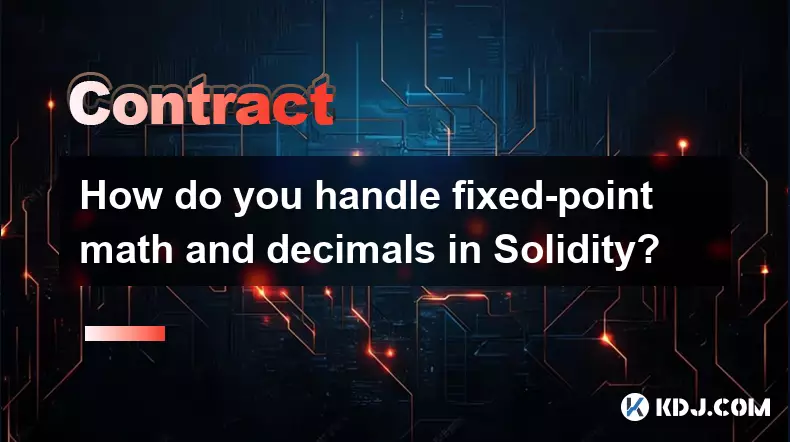
How do you handle fixed-point math and decimals in Solidity?
Nov 08,2025 at 11:40pm
Understanding Fixed-Point Arithmetic in Solidity1. Solidity does not natively support floating-point numbers, which means developers must rely on fixe...
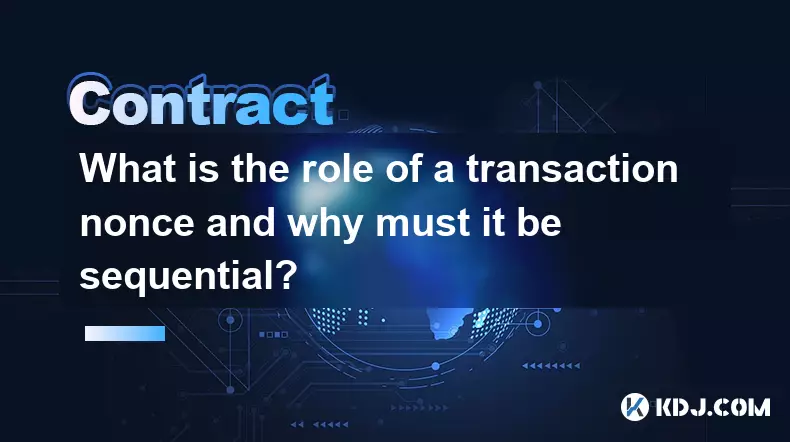
What is the role of a transaction nonce and why must it be sequential?
Nov 09,2025 at 01:00am
Understanding the Transaction Nonce in Blockchain Systems1. A transaction nonce is a number used once, associated with a user's account in blockchain ...
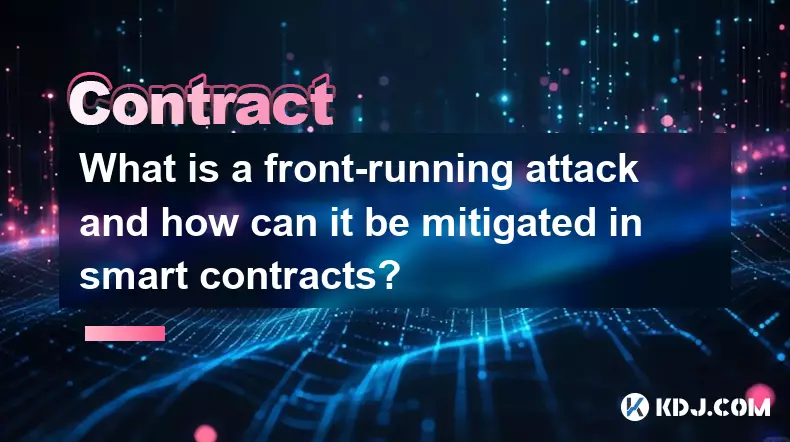
What is a front-running attack and how can it be mitigated in smart contracts?
Nov 08,2025 at 11:20am
Understanding Front-Running in Blockchain Transactions1. In the context of blockchain and decentralized applications, a front-running attack occurs wh...
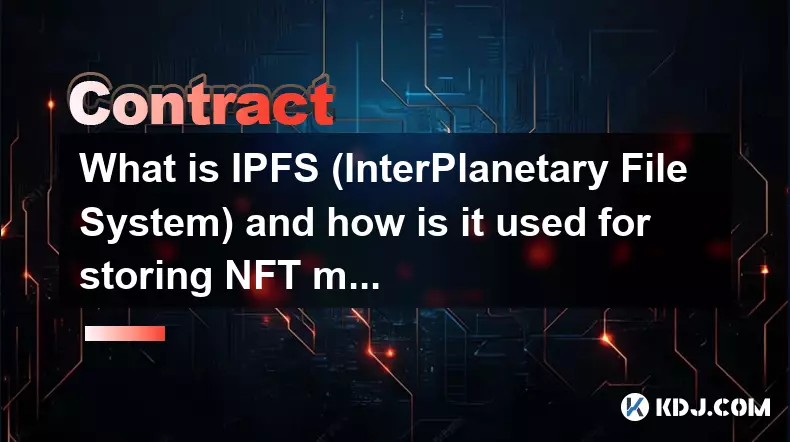
What is IPFS (InterPlanetary File System) and how is it used for storing NFT metadata?
Nov 08,2025 at 06:00pm
Understanding IPFS and Its Role in Decentralized Storage1. The InterPlanetary File System (IPFS) is a peer-to-peer hypermedia protocol designed to mak...

What is a state machine and how can a contract be designed as one?
Nov 08,2025 at 02:19pm
Understanding State Machines in Blockchain Context1. A state machine is a computational model used to design systems that transition between defined s...

How do you upgrade a smart contract using the UUPS proxy pattern?
Nov 09,2025 at 01:19am
Understanding the UUPS Proxy Pattern in Smart Contract DevelopmentThe UUPS (Universal Upgradeable Proxy Standard) pattern has become a cornerstone in ...

How do you handle fixed-point math and decimals in Solidity?
Nov 08,2025 at 11:40pm
Understanding Fixed-Point Arithmetic in Solidity1. Solidity does not natively support floating-point numbers, which means developers must rely on fixe...

What is the role of a transaction nonce and why must it be sequential?
Nov 09,2025 at 01:00am
Understanding the Transaction Nonce in Blockchain Systems1. A transaction nonce is a number used once, associated with a user's account in blockchain ...

What is a front-running attack and how can it be mitigated in smart contracts?
Nov 08,2025 at 11:20am
Understanding Front-Running in Blockchain Transactions1. In the context of blockchain and decentralized applications, a front-running attack occurs wh...

What is IPFS (InterPlanetary File System) and how is it used for storing NFT metadata?
Nov 08,2025 at 06:00pm
Understanding IPFS and Its Role in Decentralized Storage1. The InterPlanetary File System (IPFS) is a peer-to-peer hypermedia protocol designed to mak...
See all articles





















![The Graph Price Prediction [GRT Crypto Price News Today] The Graph Price Prediction [GRT Crypto Price News Today]](/uploads/2025/11/07/cryptocurrencies-news/videos/690d4df44fe69_image_500_375.webp)



















































